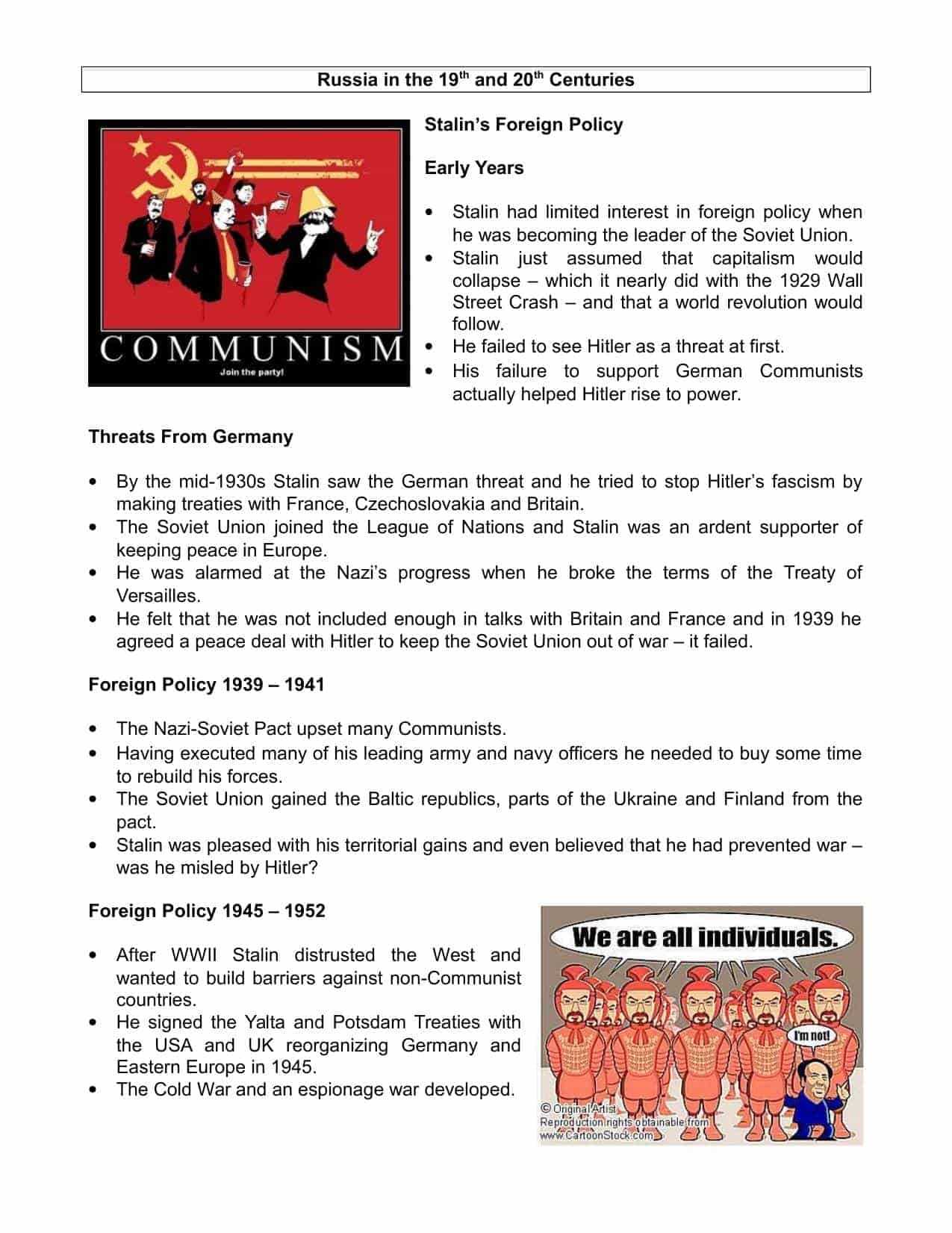Download Stalin – The Final Years
Click the button below to download this worksheet for use in the classroom or at home.
Download →
Lesson Snapshot:
Stalin’s Foreign Policy
Early Years
• Stalin had limited interest in foreign policy when he was becoming the leader of the Soviet Union.
• Stalin just assumed that capitalism would collapse – which it nearly did with the 1929 Wall Street Crash – and that a world revolution would follow.
• He failed to see Hitler as a threat at first.
• His failure to support German Communists actually helped Hitler rise to power.
Threats From Germany
• By the mid-1930s Stalin saw the German threat and he tried to stop Hitler’s fascism by making treaties with France, Czechoslovakia and Britain.
• The Soviet Union joined the League of Nations and Stalin was an ardent supporter of keeping peace in Europe.
• He was alarmed at the Nazi’s progress when he broke the terms of the Treaty of Versailles.
• He felt that he was not included enough in talks with Britain and France and in 1939 he agreed a peace deal with Hitler to keep the Soviet Union out of war – it failed.
Foreign Policy 1939 – 1941
• The Nazi-Soviet Pact upset many Communists.
• Having executed many of his leading army and navy officers he needed to buy some time to rebuild his forces.
• The Soviet Union gained the Baltic republics, parts of the Ukraine and Finland from the pact.
• Stalin was pleased with his territorial gains and even believed that he had prevented war – was he misled by Hitler?
Foreign Policy 1945 – 1952
• After WWII Stalin distrusted the West and wanted to build barriers against non-Communist countries.
• He signed the Yalta and Potsdam Treaties with the USA and UK reorganizing Germany and Eastern Europe in 1945.
• The Cold War and an espionage war developed.
• Stalin gave help to Chairman Mao, another Communist Leader, but he wasn’t really keen for them to succeed.
The Last Few Years of Stalin’s Life
• Given the damage of the war to the Soviet Union it recovered pretty quickly.
• Education and health care were improved and major efforts were made to increase the birth rate to replace the lost soldiers.
• Consumer goods and housing were neglected and living standards in 1952 were lower than in 1940.
• Heavy industry and defence projects were given high priority as the Soviet Union built it’s first atom bomb and put it’s first man in space.
• Agriculture was still a failure and food supplies were increasingly dependent on American wheat fields.
• Intolerance was the order of the day.
• Slave camps flourished.
• The purges continued.
• A rising Communist called Kruschev started to be noticed in the Soviet Union.
• Stalin died in 1952 and he might have lived longer if his servants had not been so terrified of touching him after he suffered a stroke.
Worksheet Lesson Plan:
- Aimed at Students studying across UK Year 7,8 & 9 or equivalent
- Premium resource
- Use as you wish in the classroom or home environment
- Lesson plan on the final years of Stalin.
- Contains questions throughout the study worksheet.
